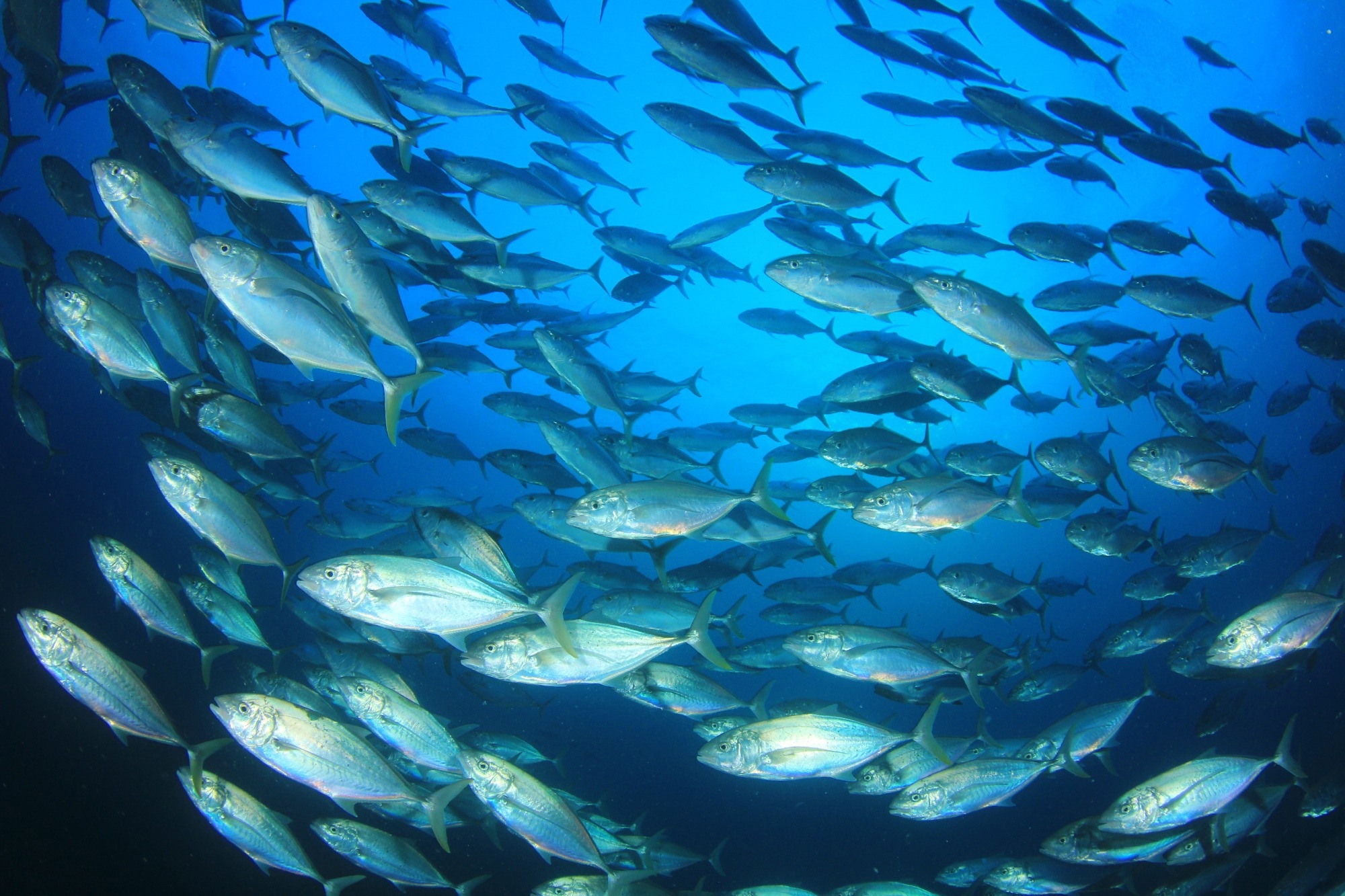A review article published in the journal Science of the Total Environment describes how residual toxins in aquatic animals can impact food safety, food security, and human health.
Background
The aquatic ecosystem is highly susceptible to climate change and other environmental factors, including residual toxins. Pollution of the marine environment can alter the ocean's biological, physical, and chemical states, which in turn can severely affect the marine ecosystem and marine wildlife.
The Pacific covers about 28% of the Earth's surface and is among the world's five largest and deepest oceans. From 2003 to 2012, the number of chemical pollutants entering the Pacific Ocean has increased by 50%. Given its significant impact on food safety, food security, and human health, marine pollution has become a significant public health concern worldwide.
 Review: Residual toxins on aquatic animals in the Pacific areas: Current findings and potential health effects. Image Credit: Rich Carey / Shutterstock
Review: Residual toxins on aquatic animals in the Pacific areas: Current findings and potential health effects. Image Credit: Rich Carey / Shutterstock
Residual toxins in the Pacific Ocean
Based on the origin, aquatic residual toxins can be divided into two categories, including toxins of marine origin and human activity-related toxins. Marine biotoxins produced from dense aggregations of unicellular algae are designated as 'Harmful Algal Bloom' (HAB). These biotoxins can accumulate in tunicates, echinoderms, gastropods, fish, and filter-feeding fauna.
Evidence indicates a spatial increase in HABs in recent decades due to climate change and anthropogenic activities, especially in Asia-Pacific and North-Pacific regions. However, no significant temporal increase in HABs has been documented yet.
Cyanobacteria gain energy via photosynthesis and produce secondary metabolites called cyanotoxins. The most widely studied cyanotoxins are saxitoxins and microcystins. The frequency of cyanotoxin production by cyanobacteria has increased in many regions across the world, including the Pacific Northwest.
Persistent organic pollutants, heavy metals, and microplastics are considered contaminants of emerging concern. These toxic contaminants primarily originated from factories, hospitals and domestic houses, agricultural runoff, and landfill leachates.
In recent years, effective interventions such as the Stockholm Convention have significantly reduced the release and subsequent accumulation of persistent organic pollutants in aquatic organisms.
In contrast, a sharp increase in microplastic pollution has been observed in recent years. Evidence indicates that plastic waste accounts for about four-fifths of all marine litter. According to recent estimates, the release of plastics from the mainland to the ocean may reach 12.7 million tons annually.
Nonbiodegradable and toxic heavy metals enter the aquatic environment mainly through agricultural runoff. These metals, such as mercury, can easily accumulate in aquatic organisms and transfer to higher trophic levels. Human activities have significantly increased mercury emissions in the environment.
Toxin exposure to aquatic animals in the Pacific Ocean
Microplastics are the major sources of aquatic pollutants affecting over 100 species, ranging from plankton to large marine animals. In the North Pacific Ocean, a higher-than-normal level of polybrominated diphenyl ethers has been detected in the adipose tissue and stomach of seabirds due to the consumption of microplastics.
Accumulation of microplastics in small animals living at the bottom of the Pacific Ocean has been found to reduce survival rate and species population. In the Eastern and the Northern Pacific Ocean, many aquatic species have been identified with significantly high levels of microplastics in their digestive system.
The analysis of different fish species from Indonesia and California fish markets has shown high amounts of plastic debris and man-made fibers in fish. These contaminants are known to affect the endocrine, immune, and reproductive systems of marine fish.
Besides microplastics, toxic chemicals released in the marine environment, such as polychlorinated biphenyls, are known to affect marine mammals, including dolphins and whales. These toxic chemicals can enter marine animal's bodies through food, water, or air and cause endocrine and digestive disruptions.
Impact of residual toxins on human health
According to recent estimates, per capita fish consumption has increased from 9 kg in 1961 to 20 kg in 2018. Consumption of contaminated aquatic animals, including fish, can significantly affect human health. Residual toxins can disrupt the balance between food requirement and supply by affecting the health and survival of marine animals.
Residual toxins accumulated in the human body through ingestion of contaminated seafood can cause a number of health complications, including cognitive impairment and other neurological problems. Paralytic shellfish poisoning caused by HAB toxins is associated with severe health adversities in humans, including cardiovascular shock or respiratory paralysis.
Cyanotoxins have been found to affect multiple human organs, including the liver, nervous system, skin, and digestive system. Some common symptoms include diarrhea, weakness, muscle tremors, vomiting, pale mucous membranes, abdominal pain, sore throat, and skin irritation. Cyanotoxins are also known to be associated with the pathogenesis of primary liver cancer.
Persistent organic pollutants have been found to cause chronic health complications in humans. Excessive exposure to these pollutants can cause congenital disabilities, cardiovascular and metabolic problems, endocrine, reproductive, immune complications, and cancers.
Consumption of heavy metal-contaminated aquatic animals can cause fatal consequences in humans. Mercury is particularly concerning among heavy metals as it is highly toxic and can be biomagnified along the food chain. In addition, cadmium and arsenic are harmful to various physiological systems, including reproductive and nervous systems.
Considering the serious human health consequences of contaminated seafood consumption, various control measures have been applied to protect aquatic animals from exposure to residual toxins. In this context, artificial intelligence and machine learning methods could be effective for predicting pollution sources, detecting pullulation levels, and identifying signs of contamination in seafood products.